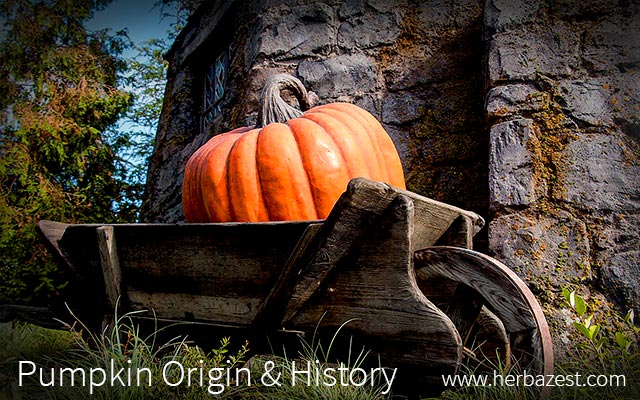Though there is still much to be learned about it, the pumpkin is believed to have originated in the ancient civilizations of North and Central America before spreading to Europe and other parts of the world during the early 16th century, the era of European colonial expansion.1 Throughout history, a large variety of different culinary, medicinal, and decorative uses for pumpkin have been applied.
Origin of Pumpkin
Though information about where pumpkins originated remains largely unclear, they have been observed growing wild in parts of northeastern Mexico. The earliest known record of human domestication and consumption of pumpkins comes from Mexico, where remnants of seeds and squashes have been found in the Oaxaca valley and Tamaulipas dwellings - perhaps dating as far back as 8750 BCE and 7000 BCE, respectively. Additional findings in Missouri (4000 BCE) and Mississippi (1400 BCE) are also relevant.
After domestication, pumpkins were transported to other parts of the world by boat during the colonial era. The earliest evidence of pumpkins in Europe, for example, can be found in a prayer book made for Anne de Bretagne, the duchess of Brittany, between 1503 and 1508. Once domesticated, the crop produced larger fruit, developing more colors and sizes, compared with the wild plant.
History of Pumpkin for Culinary Use
Many culinary uses for pumpkin have developed over time. There is some evidence to suggest that the ancient Aztecs enjoyed pumpkin seeds as a quick but satiating snack. Native Americans roasted long strips of pumpkin to eat, while European colonists are responsible for the origin of pumpkin pie - they would cut off the pumpkin top, remove the pumpkin's seeds, and fill it with honey, milk, and seasonings before baking it in hot ashes.
History of Pumpkin for Medicinal and Other Uses
Medicinal uses. The sap and pulp of pumpkins has long been used throughout parts of Central and North America as treatment for burns. Seeds have also been used by the Menominee people as a diuretic.
Decorative uses. Dry strips of pumpkins were sometimes used by Native Americans, who wove them into household mats.
History of the Jack O' Lantern Pumpkin
Jack-o'-lanterns, or simply Halloween pumpkin, emerged from the Irish folkloric tradition of using small lanterns made within turnips and potatoes to ward off tortured, wandering spirits. In the New World, these immigrants used pumpkins instead, which are native to the Americas.
The pumpkin has proven to be an extremely versatile plant with a range of different uses. Since Europeans discovered it in the early 16th century, the pumpkin has become a common food staple in the fall, widely popular in North and Central America and now cultivated in warm climates all over the world.
Sources
- Purdue University, Cucurbits
- Theoretical and Applied Genetics, Genetic relationships and evolution in Cucurbita pepo (pumpkin, squash, gourd) as revealed by simple sequence repeat polymorphisms, 2012
- University of California, Cucurbitaceae – Fruits for peons, pilgrims, and pharaohs
- University of Illinois, Extension Office, Pumpkins and More
- Kew Royal Botanic Gardens, Cucurbita pepo (pumpkin)
- Annals of Botany, First known image of cucurbita in Europe, 1503 - 1508, 2006
Footnotes:
- University of Missouri. (2013). Pumpkin: A Brief History. Retrieved October 15, 2021 from https://ipm.missouri.edu/meg/2013/10/Pumpkin-A-Brief-History/




